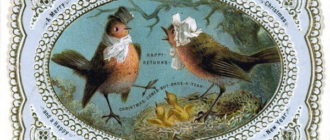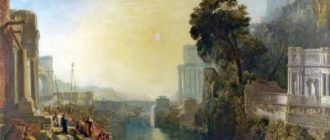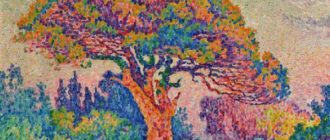
The painting “Adam and Eve” by Albrecht Dürer is a diptych based on biblical motifs, written under the influence of the art of antiquity
“Adam and Eve” – a painting by the outstanding German painter Albrecht Dürer is a diptych created under the influence of ancient sculpture. The plot touches on the events described in the Bible, which tells about the eating of the forbidden fruit by Adam and Eve.
One wooden panel depicts the first man on earth. The other shows his companion. Stopping at the tree of knowledge, she leans lightly with one hand on a low-growing branch. And with the other hand he takes the apple of discord from the snake.
All the details of the picture and the figures of people are shown in full size, which corresponds to the spirit of antiquity. Images are distinguished by the correct proportional construction, expressiveness of movements. The gestures of the heroes are restrained and graceful, the expressions on their faces are dreamy.
Classically perfect bodies glow, illuminating the surrounding dark background. Adam and Eve are different people in many ways, so the artist depicted them separately. However, the composition of the masterpiece is such that even if the panels are placed at some distance relative to each other, then the single plan of both boards is preserved. The general idea of the work is confirmed by the fruits in the hands of the actors. On closer examination, you can see that the bodies of the characters are somewhat elongated, and their heads are reduced.

Name of the painting: “Adam and Eve” (German: Adam und Eva).
Author: Albrecht Dürer (1471-1528).
Year of writing: 1507
Size: 209 x 81 cm (Adam), 209 x 80 cm (Eve)
Style: Renaissance.
Genre: Biblical.
Technique: Oil painting.
Material: Wood.
Location: National Museum of the Prado (Spanish: Museo Nacional del Prado), Madrid, Spain.
Albrecht Dürer – the greatest representative of the Renaissance
He created beautiful altarpieces, personal religious images, self-portraits and portraits. The master managed in his works to combine the humanistic thought of the Italian Renaissance with the moral strength of German Gothic. His creations are characterized by clear detail and the utmost focus on the inner world of the characters. Albrecht Durer is an innovator of painting of the 16th century, who opened the world to a man of a new time – a thinking and free from prejudice of the Middle Ages.
The genius for several years hatched the idea of a plot on the theme of the fall. In 1504 he created a copper engraving. And three years later, the work “Adam and Eve”, painted in oil, appeared.
In this picture, Dürer sang a hymn to the glory of the progenitors of modern society. The painter presented Adam and Eve as two hypostases of the human organization. It is assumed that the diptych was originally kept in Nuremberg, and was later moved to Prague Castle. During the pan-European military conflicts that lasted from 1618 to 1648, the armies of the Swedes and Saxons plundered the castle. The valuables were stolen and quickly dispersed around the world. Most of the stolen works went to the Swedish king.
The safety of the painting was threatened
The safety of the painting was threatened in the 18th century, when King Charles III began to reform in the spirit of enlightened absolutism. He ordered the creation of the great master to be destroyed due to the fact that he considered the content of the work extremely obscene. However, the courtiers managed to persuade the monarch to transfer the work to the Academy of Fine Arts in San Fernando.
For a long time, the masterpiece was in closed rooms and became available to the general public only in 1833. The painting “Adam and Eve” by Albrecht Dürer is the result of a detailed study of the proportions of the human figure and the laws of its harmonious construction. The ideas that most excited the artist were invested in this work.






